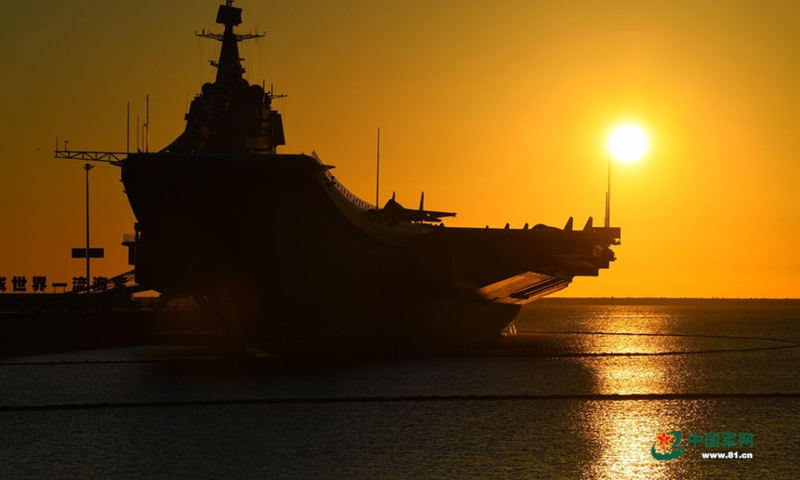The Shandong carrier strike group of the Chinese People’s Liberation Army (PLA) reportedly returned to the South China Sea on Monday after having held the carrier strike group’s third far sea exercise of the year in the West Pacific, in which the carrier doubled the record of its aircraft sortie rates and demonstrated its increasing capabilities in fending off potential external interference attempts and provocations, experts said on Tuesday.
Japan Maritime Self-Defense Force on Monday spotted the aircraft carrier Shandong among other PLA warships sailing toward the South China Sea after having held nine days of drills in the West Pacific, according to a press release Japan’s Ministry of Defense Joint Staff issued on Monday.
Escorted by naval forces including two Type 055 large destroyers, three Type 052D destroyers, three Type 054A frigates and a Type 901 replenishment ship, the Shandong carrier operated from October 28 to Sunday (November 5) in the international waters in the Philippine Sea, between the southeast of the island of Taiwan, northeast of the Philippines, west of Guam and south of Japan’s southwestern islands, according to a chart and a map attached to the Japanese press release.
During the drills, the Shandong carried out around 420 fighter jet sorties and 150 helicopter sorties, totaling 570 aircraft sorties, the Japanese press release said.
This indicates that the Shandong carried out about 63 aircraft sorties a day on average during its latest exercise, nearly twice as many as when the carrier conducted its first far sea exercise in the region in April, about 34 a day, and three times as many as the sortie rate record set by the PLA’s first aircraft carrier, the Liaoning, in January, about 21 per day.
It means that the Shandong has boosted its training level and brought significant enhancements to the capabilities of the crew and pilots, Fu Qianshao, a Chinese military aviation expert, told the Global Times on Tuesday.
On Sunday, when the Shandong carrier strike group was still holding exercises in the Philippine Sea, the US Navy’s Carl Vinson and Ronald Reagan carrier strike groups held the Multi-Large Deck Exercise with Japan Maritime Self-Defense Force’s helicopter destroyer Hyuga, also in the Philippine Sea, according to a US Navy press release on the day.
The two exercises were unlikely aimed at each other, but the fact that both drills coincidentally took place in this sea region highlights the location’s strategic significance, analysts said.
The sea region to the east of the island of Taiwan is a strategic node if the US and other external forces interfere in the Taiwan question, so both sides are practicing for a potential conflict, Fu said.
While the PLA carrier’s routine far sea drills do not target any third party, if external forces attempt to provoke or interfere in the Taiwan question, then their presence in the region would serve as a perfect chance for the PLA to practice, experts said.
(Global Times)




